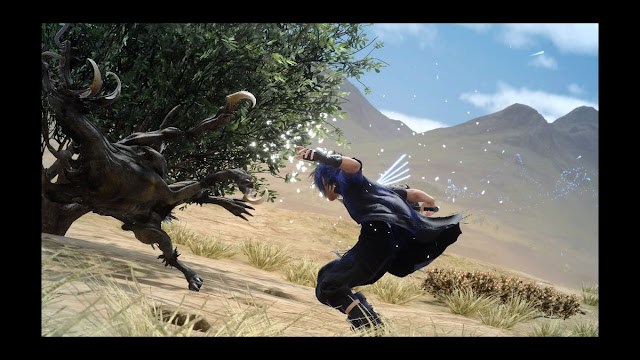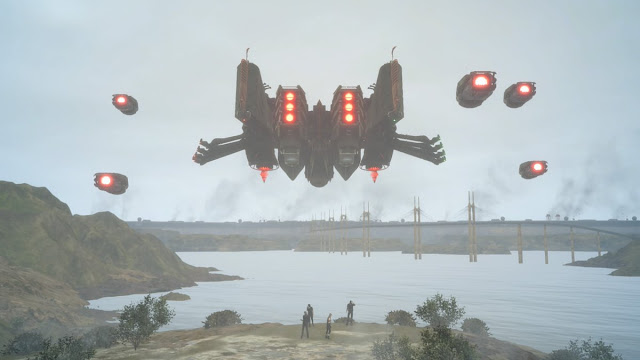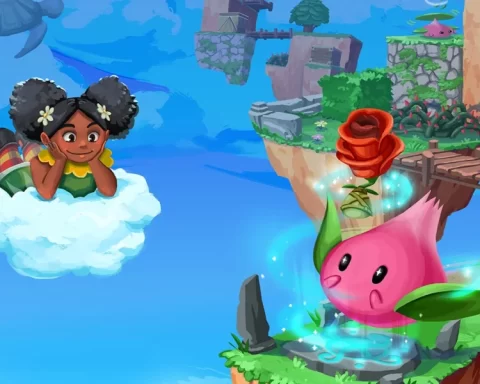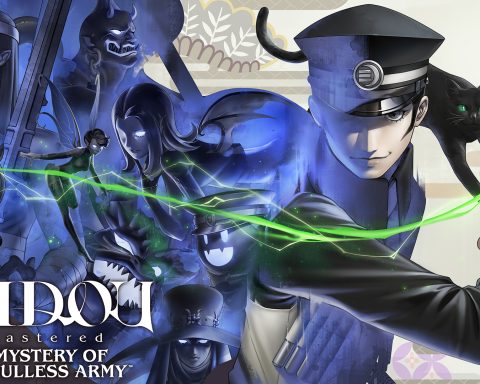Review by Matt S.
Stand By Me is an incredibly important film to the Japanese: while it may have been filmed in Hollywood and looks and behaves like a Western film, the subject matter of the film itself is of great relevance to Japan.
Related reading: You really should watch the prequel movie before playing this game. Matt’s write-up of that film.
This is a culture that thinks nothing of sending its five-year old children out to board trains or busses to get themselves to school. Everywhere you go in Japan you’ll see unaccompanied children going about their days, either with friends or by themselves. Very rarely do you see kids out and about with their parents. They can do this because Japan is incredibly safe and so there’s little actual risk to the children, but also because to the Japanese learning independence and self-sufficiency is important from a very young age. And so Stand By Me, a coming of age story about a group of children coming to terms with life by being exposed to the most adult of topics – death – and then going on a journey together, embodies a theme resonant to this culture. In the perfectly mundane adventure (from the adult’s perspective) that the film’s kids go through the Japanese see a mirror of their own childhood, and the childhood of their kids.
In Final Fantasy XV, the children are less ‘child’ and more like young adults, but the coming of age story is equally poignant. You play as Noctis, a young and brash (and incredibly handsome) prince for a kingdom that has been under siege from a vastly more powerful foe for many years. Noctis is sent on a trip with his three equally young and brash (and even more handsome) friends to meet – and wed – Lunafreya; a person of importance to the empire, as part of peace negotiations between the nations. Of course, if you’ve seen the prequel film (and you really should for background before playing the game), then you’d know where those negotiations went. Long story short: the king is killed, Lunafreya goes missing, and Noctis is suddenly thrust into the job of recovering weapons of antiquity that will give him the power to assume his birthright and fight back against the empire.
If there’s a FFXV-2 I hope it stars Iris. She’s the new Vanille. #PS4share https://t.co/EVfWUzx8Yg pic.twitter.com/xbsszShu2g— Miku McMikuFace (@DigitallyDownld) November 29, 2016
The base principles of the adventure are going to be absolutely familiar to Final Fantasy veterans, who have fought their way through many evil empires over the years, and often as the struggling nobility of the aforementioned empire. But in Final Fantasy XV, it is the journey itself that is important, and specifically the way the band of boys comes to terms with their newfound adult responsibilities and the realities of the world around them. At the start they’re a bunch of bantering, sheltered kids, pushing their broken-down car across the great open highways outside of the major cities, looking for a mechanic to fix it. A couple of hours of play later, Noctis learns that his father was assassinated, and everything takes on a serious edge from there. The banter is still there, and Noctis’s friends work very hard to keep his spirits up through the quest; the ultimate in a support network, but Square Enix wants you to focus on Noctis’s growth into adulthood, and that transition between a light-hearted journey to marry the completely gorgeous princess to taking the hopes of a nation onto his shoulders is a powerful one.
The idea of the journey is further emphasised by the massive open world that the game takes place in. In most cases I can’t stand open world games, because I find them to be superficial and indulgent; an excuse for the developers to be lazy with the plot development by giving players an endless stream of useless sidequests and icons on the minimap to chase around. I can count on one hand the number of games that actually make the open world part of the storytelling, and Final Fantasy XV is one of these. When that happens, I love open world games. Square Enix’s intention clearly never was to make you explore every inch of the world. Rather, the overwhelming majority of the action takes place in ‘pockets’ of land around places where the party can park their car. Because the world is so big, the only way to get around in reasonable time is by driving, and just about every mission is located within a short walk of a car park.
The thematic effect is that of a road trip; while the boys are on the road they’ll banter. Prompto, one of the friends, is a photographer, and will frequently request to stop so he can take a photo of a landscape here and there. Gladiolus, the game’s nominal beefhead, will often use the downtime in the car to catch up on his reading, which has no in-game effect; but a literate beefhead is a nice change for Square Enix, which typically typecasts its heroes rather than fleshing them out into nuanced beings. This time in the car is “dead time” with very little action, and while it’s possible for Noctis to drive himself, you’re also able to pass the responsibility over to Ignis and then sit back and “play” nothing while watching the car make its way to its destination.
If that sounds dull, then it’s possible to fast-travel to places you’ve already visited, but I never felt like I should do that, because the journey is so important to Final Fantasy XV, and this meant the mundane should be part of the experience. Square Enix worked overtime to make the interactions between the four protagonists while on the road believable, and again, the banter between them helps to create that sense of friendship and bonding that called to mind the group’s coming of age experience from Stand By Me. The open world itself isn’t always interesting (as in the real world there are great swathes of space that are simply empty), but the way the group moves through this space is significant from a character-building point of view, and as I said, it’s rare that an open world game makes the characters’ interaction with the environment part of the storytelling experience.
The other really compelling theme within the game is Noctis’s progression from prince to king, and the burden that places on him. To claim his birthright (and the power, as king, he needs to defeat the empire), Noctis has to descend into the tombs of his ancestors, complete challenges there, and acquire weapons of great power. Unfortunately those weapons also cause great damage to the person using them. In combat it means that each attack from one of these special weapons saps Noctis’ health. In terms of narrative, Noctis’s absorption of the power gives him blinding headaches and painful visions. The metaphor is simple, of course; genuine leadership is a process of self-sacrifice and burden, and because Noctis and his father willingly take this on, we’re meant to see them as heroic and good monarchs. Simple as it is, it’s explored in a subtle and nuanced enough manner that I found it to be a strong theme.
Plenty of other traditional Final Fantasy elements make their way into the game in a big way, too. Chocobos, crystals, the music (you can play many of the Final Fantasy soundtracks while driving around in the car), and the occasional reference back to earlier games helps to make this an explicitly Final Fantasy game. Given that long-term fans were concerned that the shift in direction and structure of the game – to open world, a cast without women, and a more naturalistic, modern setting – would mean Square Enix was abandoning its Final Fantasy roots, it was a welcome surprise to find that Final Fantasy XV is the most traditional Final Fantasy game in many years.
Rockin’ out to Aerith’s theme while road trippin’. So cool. #PS4share https://t.co/EVfWUzx8Yg pic.twitter.com/ze8vCPADMQ— Miku McMikuFace (@DigitallyDownld) November 29, 2016
The combat was another concern many had with Final Fantasy XV, because it looks to be incredibly fast and action-orientated. With the same director at the head of this game as Final Fantasy Type-0 HD, which was an incredibly fast action game, this concern was justified. As it turns out, however, Final Fantasy XV’s combat has a rhythm to it that is so cleverly like a turn-based game that you’d never even notice the fundamental principles are that you trade blows with your opponents just as you would back in Final Fantasy VII or VI. By holding down a button, Noctis (and, aside from moments where you give commands to allies to use special attacks, you are always in control of Noctis) will automatically dodge enemy attacks, and might be presented with the opportunity to reflect an attack for a counter. The basic strategy of the game is to keep weaving out of the way of enemies until an opportunity to counter comes up, at which point you’ll get a couple of seconds to string together some attacks of your own. It is, thematically, very turn-based, even as it feels like a modern action system. Kudos to Square Enix for managing to massage such a system that should, visually, appeal to the modern mainstream audience, most of whom would never deign to play something as pedestrian and abstract as a turn-based combat system, while feeding them precisely that in such a way that it’s barely noticeable. From the demos of Final Fantasy XV prior to release I was not sold on the combat at all, but put in the context of the entire game, after the first ten or so hours of play, I was completely sold on it.
As a big blockbuster, so many years in the making, Final Fantasy XV is oddly understated in presentation. There are odd moments where the presentation looks downright primitive; a character pushing through foliage creates the odd effect of the entire foliage being shoved in one direction. Coming from games like The Witcher 3, this open world is a little more static, a little less beautiful, and a touch less refined. But only a little. Conversely, the quality of the character designs and animation is impossibly good. Once again, Square Enix realised that the strength of this game lies in the interactions between the four main characters, and the way they fight and play together is incredibly organic and believable, and that’s before they’ve even spoken to one another. And as always for the series, the music is unbelievably good. Even when you’re not listening to past soundtracks while on the road, the music playing in each area is distinctive and memorable and beautiful on the ears. Indeed, Square Enix seems to have used the music as one of the pins linking the game to the franchise; though it’s a new score, the themes that roll through the soundtrack are much more traditional Final Fantasy than the more experimental stuff we heard in XII and XIII.
If I have one disappointment with the game, it’s that it’s an all-male cast. As someone who universally prefers Final Fantasy’s women, to have no females in the core cast took some getting used to. Of course, it is essential to the plot that the four protagonists are male, and I don’t begrudge the game this, but from a purely aesthetic and comfort point of view my favourite moments in the game were when Lunafreya, mechanic Cindy, or Gladiolus’s sister, Iris, were in the picture. Who knows, perhaps a FFXV-2 can star one of them. Hopefully Iris. I love Iris.
I’ve read some comments claiming that Final Fantasy XV, having fewer cut scenes or long-winded dialogue sessions, has a ‘thin’ plot in comparison to other games in the series. This simply isn’t true. The thematic depth and cultural context of the game make for a wonderful, complex, and meaningful narrative, and FFXV is every bit as worthy as a narrative work as Stand By Me, from which it draws so much inspiration. Couple this with the fact that it’s a surprisingly traditional Final Fantasy game in the ways that count, and I’ve got to say I haven’t loved a Final Fantasy game with such raw passion in many years. This game alone catapults Square Enix’s most important franchise right back into the circle of most elite properties in gaming, proves that AAA games can be intelligent and meaningful, and deserves every plaudit and accolade out there.
– Matt S.
Editor-in-Chief
Find me on Twitter: @digitallydownld










